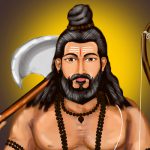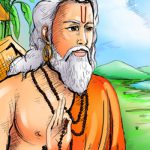Introduction
Time, in general terms, is a cycle of creation and destruction. According to Hinduism, time is endless, and the division of time is into four Yugas – Satya Yuga comprising of 4*43,2000 years, Treta Yuga comprising of 3*43,2000 years, Dvapara Yuga comprising of 2*43,2000 years and Kali Yuga comprising of 43,2000 years. The Yugas keep succeeding each other, and thus, time is endless. The wheels of the Yugas are eternal because they keep following each other in a pattern, and this is the concept of time defined by the Hindu Dharma.
The Satya Yuga was the era of truth. The Satya Yuga was the first Yuga, and it lasted for 1,728,000 years. It was also called the Krta Yuga. This Yuga was considered the best as virtue reigned supreme. This era has been often referred to as the Golden Age and was the purest of all eras.
The height of the average human was 21 cubits, and the average human lifespan was 100,000 years. The outstanding feature of this era was that humanity was pure and virtuous. The most critical facets of the Satya Yuga were knowledge, meditation, and peace. There were no illusions. During this Yuga, humanity was ruled by Gods, and all that reigned was goodness. People did not practice evil thoughts, deeds like deceit, nor did they have any negative traits.
It was the era when Goddess Dharma was depicted as a cow that was symbolic of morality, standing on four legs. Later, the number of legs started reducing as in the Treta Yuga, she stood on three legs, in the Dvapara Yuga, she stood on two legs, and finally, in the Kali Yuga, she stands on one leg. The Yugas represent a gradual loss of the inner self and virtues in human beings. The Yugas also reflect a gradual decline of Dharma, wisdom, intellect, courage, physical and emotional strength, and lifespan.
In the Satya Yuga, God was known by the names of Dharma, Paramatma, Vaikuntha, Purusha, Hamsa, Suparna, Yogeswara, Amala, and Avyakta. It was the era when the marriage ritual of Shiva to Parvati took place. The Supreme cosmic soul was in white and occupied a place in the hearts of everyone.
Highlights of the Satya Yuga
In the Satya Yuga, everyone was equal and could access God, and attain the Supreme Blessings. There were no feelings or tendencies of evil, hatred, jealousy, envy, vanity, sorrow, or fear. Humanity had no worldly desires, and they were free from ailments. The people living in this era were self-contained and were inclined towards spiritual perfection.
The Satya Yuga was a peaceful and serene era. There was a lot of compassion, friendship, contentment, and peace in the community.
People were more into the realization of the self and wanted to attain spirituality and purity. They had exceptional tolerance levels and held everyone as equal. They exercised self-control within and on the outside.
The Sayta Yuga holds importance in that Vishnu appeared in four of his incarnations in this era. He appeared in the form of Matsya, Kurma, Varaha, and Narasimha. During this era, only Manu’s Dharma Shastra existed if people wanted to follow some principles. Sanatana Dharma (eternal religion) was established only in the Satya Yuga.
During the Satya Yuga, the deities, Gandharvas, demons, and Yaksha lived in harmony and did not cultivate hatred or differences between themselves. Nobody found fault with the other person. There was no agriculture or any other activity during the Satya Yuga. Everything could be obtained through sheer power of the will.
All communities, be it Brahmin, Kshatriya, Vaishya, or Shudra, lived harmoniously and engaged only in positive attitudes and had exceptional positive qualities. The Brahmins were involved in teaching, religious sacrifices, studies, and undertook charity.
The Kshatriyas were engaged in valor and staying strong. The Vaishyas were involved in trade and were scrupulous and honest in their profession. The Shudras were engaged in being sincere in their service towards the Brahmins, Kshatriyas, and Vaishyas.
People born in this era were knowledgeable, courageous, and gifted with all good qualities. People lived a pure life practicing meditation and doing penance. The great sages were born in this era. What everyone was aiming to achieve was the supreme spiritual knowledge and enjoyed a serene life. The Satya Yuga was the perfect Yuga and represented and stood for righteousness and virtues.


Comments are closed